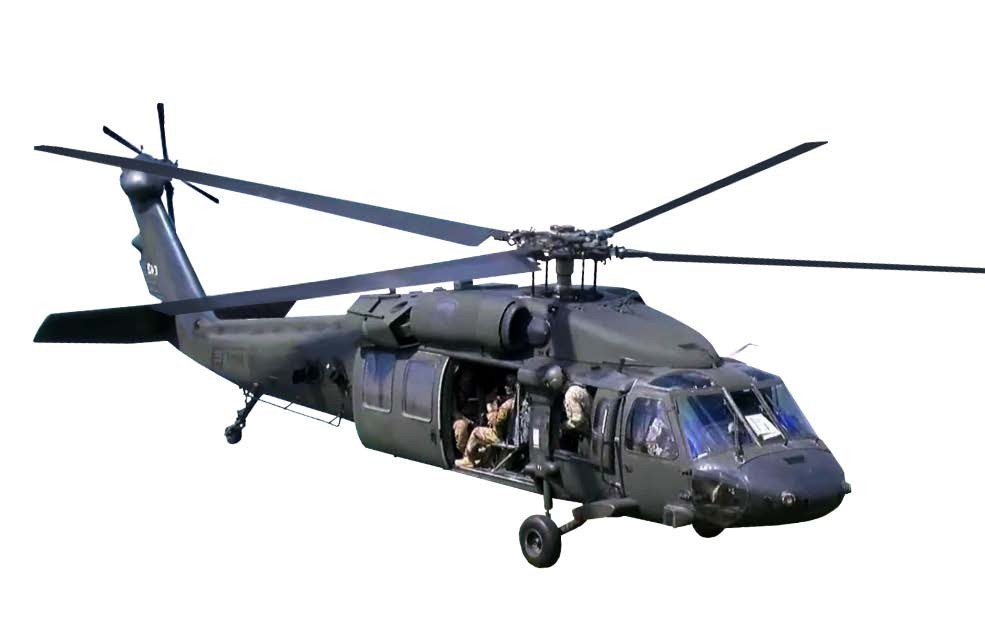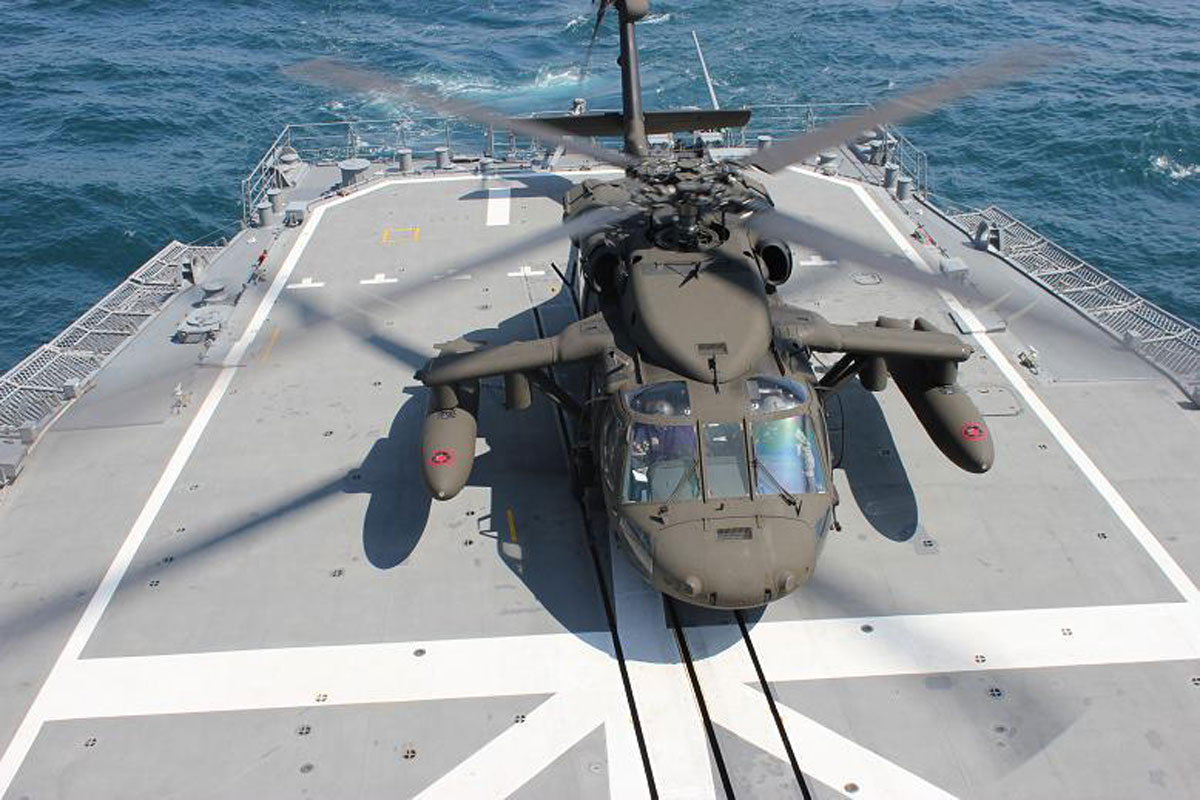The UH 60 and Its Payment to Airborne Operations in Critical Objectives
The UH 60 and Its Payment to Airborne Operations in Critical Objectives
Blog Article
Crucial Facts and Insights Concerning the UH-60 Helicopter
The UH-60 helicopter, a foundation of contemporary military aviation, has evolved significantly since its intro in 1979. Recognizing the details of the UH-60's duty exposes a complicated narrative of innovation and adjustment that qualities better expedition.
History of the UH-60
The UH-60 Black Hawk helicopter was developed in the late 1970s as component of the United States Army's campaign to change the older UH-1 Iroquois. The requirement for a more versatile, sturdy, and qualified aircraft arose from the lessons found out during the Vietnam War, where the constraints of the UH-1 emerged. In 1972, the Army launched a program to obtain a new energy helicopter, culminating in an affordable style phase that saw numerous makers submit propositions.
Sikorsky Aircraft was ultimately granted the contract in 1976, and the initial prototype of the Black Hawk took trip in 1974. Its style focused on innovative innovation, including a four-blade blades system and a modular building that permitted quick field upkeep and versatility to various objectives. Officially going into service in 1979, the UH-60 promptly became the foundation of Military aeronautics, serving in a multitude of duties such as troop transportation, medevac, and logistical assistance.
For many years, the Black Hawk has gone through numerous upgrades and adjustments, strengthening its standing as an important property in military procedures around the globe (UH 60). Its robust performance proceeds to meet the progressing needs of modern warfare
Design and Features
Integrating sophisticated design concepts, the UH-60 Black Hawk includes a streamlined, aerodynamic design that enhances its performance and effectiveness. This twin-engine utility helicopter is defined by its unique shape, with a high-mounted, four-blade primary blades system that supplies remarkable lift and stability. The rotor blades are constructed from composite materials, contributing to their sturdiness and minimizing upkeep demands.
The body is created for ideal weight circulation and structural stability, permitting an optimum gross weight of about 22,000 extra pounds. The cabin layout promotes adaptable setups, suiting various goals, from troop transportation to medevac procedures. Additionally, the cabin is furnished with advanced avionics, including electronic display screens and multi-functional systems that enhance situational understanding.
The UH-60 additionally integrates composite products in its airframe, which decrease radar cross-section and enhance survivability in aggressive environments. Its retracting landing gear improves the airplane's profile, more contributing to its aerodynamic efficiency. Overall, the thoughtful assimilation of layout aspects and products not just boosts the Black Hawk's operational capacities yet also makes certain that it continues to be a crucial asset for goals throughout varied surfaces and conditions.
Operational Capacities


The UH-60 is geared up with sophisticated avionics and navigation systems, promoting operations in difficult weather and low presence scenarios. Its durable layout enables it to carry out in extreme and high-altitude temperature conditions, additionally expanding its functional variety. The helicopter's twin-engine arrangement gives redundancy and enhanced efficiency, ensuring reliability during vital missions.
Equipped with advanced communication systems, the Black Hawk enhances situational recognition and sychronisation among military devices. Additionally, its capacity to carry out aerial reconnaissance and assistance close air assistance missions emphasizes its integral duty on the combat zone. In general, the UH-60 Black Hawk's functional capacities are a testimony to its relevance in modern-day armed forces aviation, successfully fulfilling the needs of a rapidly progressing functional landscape.

Adjustments and variants
Various variations and modifications of the UH-60 Black Hawk have been developed to meet particular objective requirements and boost its operational flexibility. One of the most noteworthy variation is the UH-60L, which presented updated engines, boosted avionics, and enhanced freight ability. Additionally, the UH-60M variant attributes advanced digital avionics, a much more effective engine, and enhanced survivability systems, making it appropriate for a wider selection of goals.
The HH-60G Lead Hawk is another specialized variant, designed for search browse around these guys and rescue procedures. It is equipped with advanced navigation systems, outside fuel containers, and medical discharge abilities. Likewise, the MH-60R Seahawk is maximized for anti-submarine warfare and maritime operations, boasting sophisticated radar and sonar systems.
Furthermore, the armed variants, such as the AH-60, are modified for straight strike roles, including weapon systems like rockets and maker guns. The UH-60's flexibility is further showcased in its capability to be fitted with mission-specific equipment, including freight hooks for transport, army transport interiors, and reconnaissance sensors.
These variants and modifications underscore the Black Hawk's crucial role in modern-day army operations, showcasing its ability to adapt to advancing goal needs.
Function in Humanitarian Initiatives
The UH-60 Black Hawk has stepped up to play an essential role in altruistic efforts around the world, demonstrating its versatility past armed forces applications. This multi-mission helicopter is outfitted to perform a variety of goals, including clinical discharges, disaster alleviation, and logistical support in challenging environments.
Throughout all-natural calamities, such as cyclones and earthquakes, the Black Hawk has confirmed very useful for transporting alleviation supplies and employees to impacted areas. Its capability to operate in austere problems permits it to reach remote locations that may be hard to reach by ground transport, guaranteeing timely assistance to those in need.
Additionally, the UH-60 is often used for medical discharge missions, quickly moving hurt people to clinical centers. Its innovative clinical abilities, including space for clinical personnel and devices, enable life-saving interventions throughout important scenarios.
In international operations, the Black Hawk regularly collaborates with humanitarian companies, showcasing its versatility and dependability. By leveraging its abilities, the UH-60 not only supports army purposes however also plays a crucial duty in reducing and saving lives suffering throughout humanitarian dilemmas worldwide.
Final Thought
The UH-60 helicopter has actually established itself as a critical property in army procedures because its intro, defined by its robust design and flexible capabilities. The Check This Out UH-60's payments expand beyond battle, playing a considerable function in altruistic initiatives worldwide.
The UH-60 Black Hawk helicopter was developed in the late 1970s as part of the United States Military's initiative to replace the older UH-1 Iroquois.Incorporating sophisticated design principles, the UH-60 Black Hawk features a sleek, blog here wind resistant style that enhances its efficiency and effectiveness.Optimized design and advanced engineering allow the UH-60 Black Hawk to stand out in a variety of functional roles. Generally, the UH-60 Black Hawk's functional capabilities are a testament to its importance in contemporary army aviation, effectively satisfying the demands of a rapidly evolving operational landscape.
Different variations and modifications of the UH-60 Black Hawk have been created to fulfill particular mission demands and boost its functional convenience.
Report this page